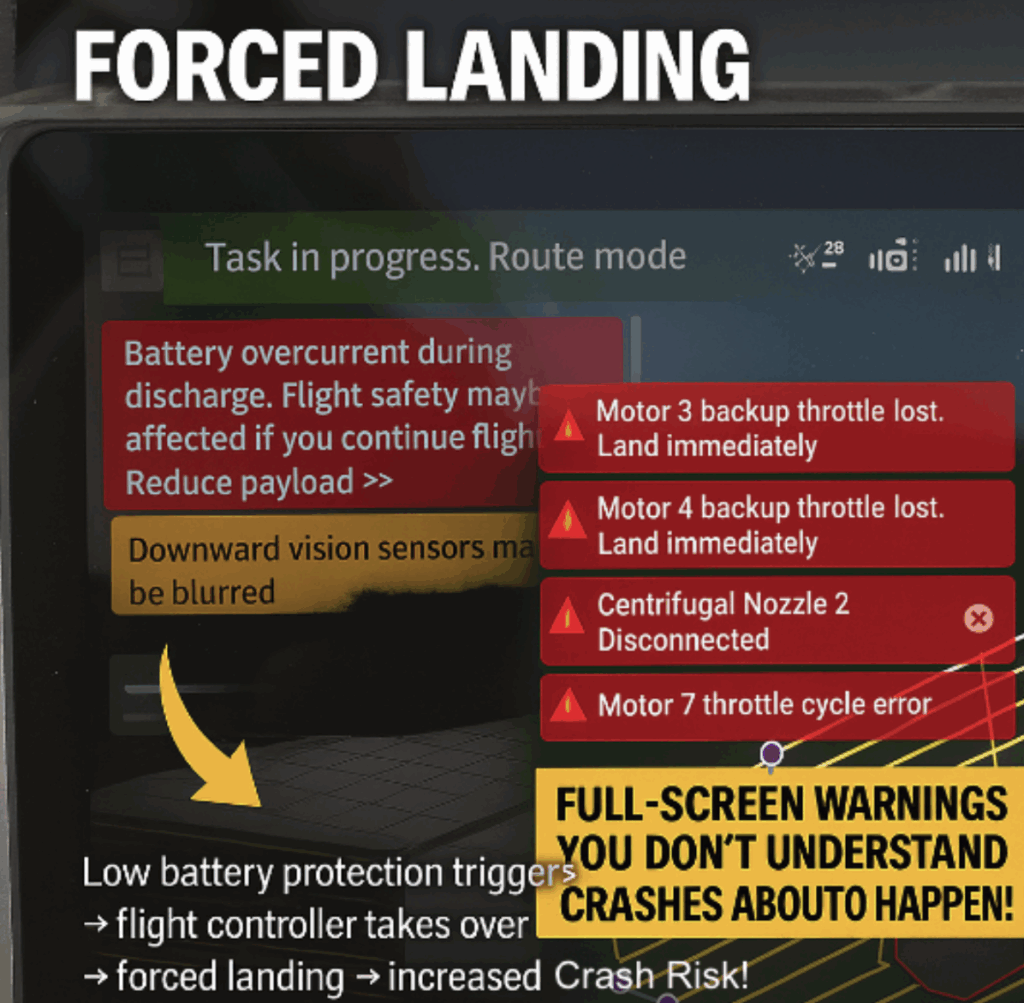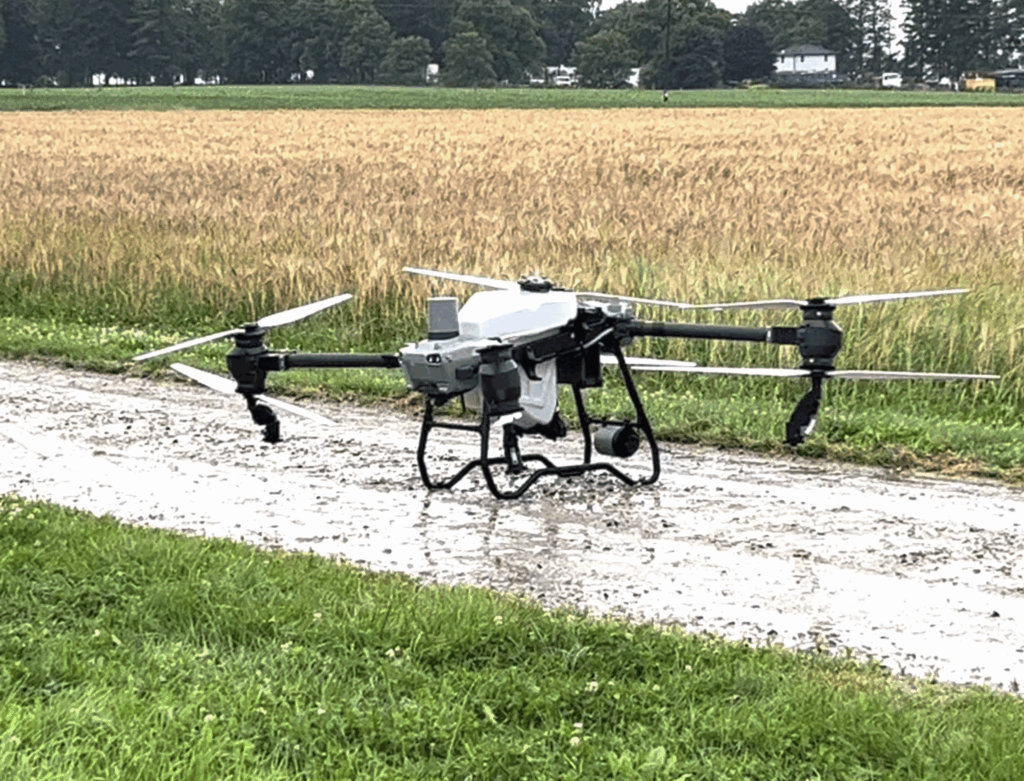Drone Repair Services
Do you have drone problems?
You’re Not Alone — But You’re Not on Your Own Either!
We handle DJI AGRAS drone repairs support including diagnostics, parts replacement, firmware recovery, and damage assessment. Warranty status will be reviewed based on purchase date and conditions.
Please click Drone Repair Request Form
How to handle farm drone Forced Landing

Almost Crashed—Still Think You Don’t Need Training?
Take a look at these real screenshots:
Battery overcurrent → imminent crash
Motor failure and nozzle disconnection
Flight controller takes over and forces a landing—you can’t override it
This isn’t a simulation. These were captured on-site by some drone pilots.

Many pilots ask: “My T50/T40 still had battery—why did it suddenly land on its own?”
“I pulled the sticks—why didn’t it come back?”
Here’s why:
Low Battery Forced Protection Mode.
When your battery drops to a critical threshold, the flight controller decides:
“I won’t make it back—I must land NOW.” It will force a landing, whether you’re ready or not.
If this happens over a high value crop field, tall crops, or near power lines, the consequences can be disastrous.
This is not a hardware failure—it’s a pilot awareness problem.
Our practical Academy hands-on training will teach you how to:
- Read real-time voltage and current data
- Know exactly when to turn back
- Avoid “autopilot hijacking” forced landings
- Prevent overcurrent, motor burnouts, and nozzle disconnections
One missed training can mean one more crash risk. Sign up for free farm drone consultation support and training:
https://wonderfull.ca/academy
Helpful Support Tips
We talk to drone users every day, and we’ve noticed something:
Most “big” problems start from really simple mistakes.
Here are a few quick tips that every pilot should keep in mind—feel free to share with your team.
1. Drone batteries + water = bad idea
DJI Agras batteries are not waterproof. If they get wet or short-circuit, the damage can be permanent—and in the worst case, they can catch fire.
After a hot day in the field, some people try to cool batteries in water. Please don’t. Follow the correct cooling and handling steps instead.
2. Keep takeoff and landing areas clean
Light plastic bags, film, or old packaging can get sucked into the drone by the downdraft.
This can block radar or damage propellers. A quick clean-up of your landing zone is an easy way to stay safe.
3. Power lines are risky—even if you don’t touch them
High-voltage lines can mess with your drone’s flight control through electromagnetic interference.
When flying near substations and transmission towers, the drone may malfunction or return unexpectedly. Always check for interference and set safety parameters.
4. Maps are helpful, but not perfect
If you only rely on map-based planning in orchards, mountains, or near greenhouses, you might miss new obstacles—like poles, scaffolding, or unmarked buildings.
Good habit: take a quick look around and survey the area before every flight.
5. Seeding issues? Check your seeds first
Uneven seed size, too much moisture, or sticky seeds can clog the spreader.
Correct parameter settings + proper seeds = smooth operation.
6. Don’t push yourself
If you start feeling dizzy, tired, or unwell during a flight, stop immediately.
Hydrate, rest, and recover.
Even with auto return-to-home, a tired pilot isn’t a safe pilot.
7. Battery draining fast? Might be your flight habits
Flying at max speed? Uneven load or hot weather?
It’s not always the battery’s fault—flying smarter saves more power than buying new batteries.
These tips come from real cases we’ve seen in the field and on our support calls.
Follow them, and you’ll protect your drone, your time, and your wallet.
Want to take it to the next level?
Over the past few years, we’ve trained countless agricultural drone pilots—and we’re proud to say that our trainees have maintained a perfect safety record.
No crashes. No accidents.
That’s something we’re genuinely proud of.
Our Agricultural Drone Academy Training Program will show you how to plan smarter flights, troubleshoot on your own, and fly with confidence.
Spots fill up fast—[click here to learn more] or reach out to us anytime.
Fly safe, fly smart, and keep your Agras running like new!
